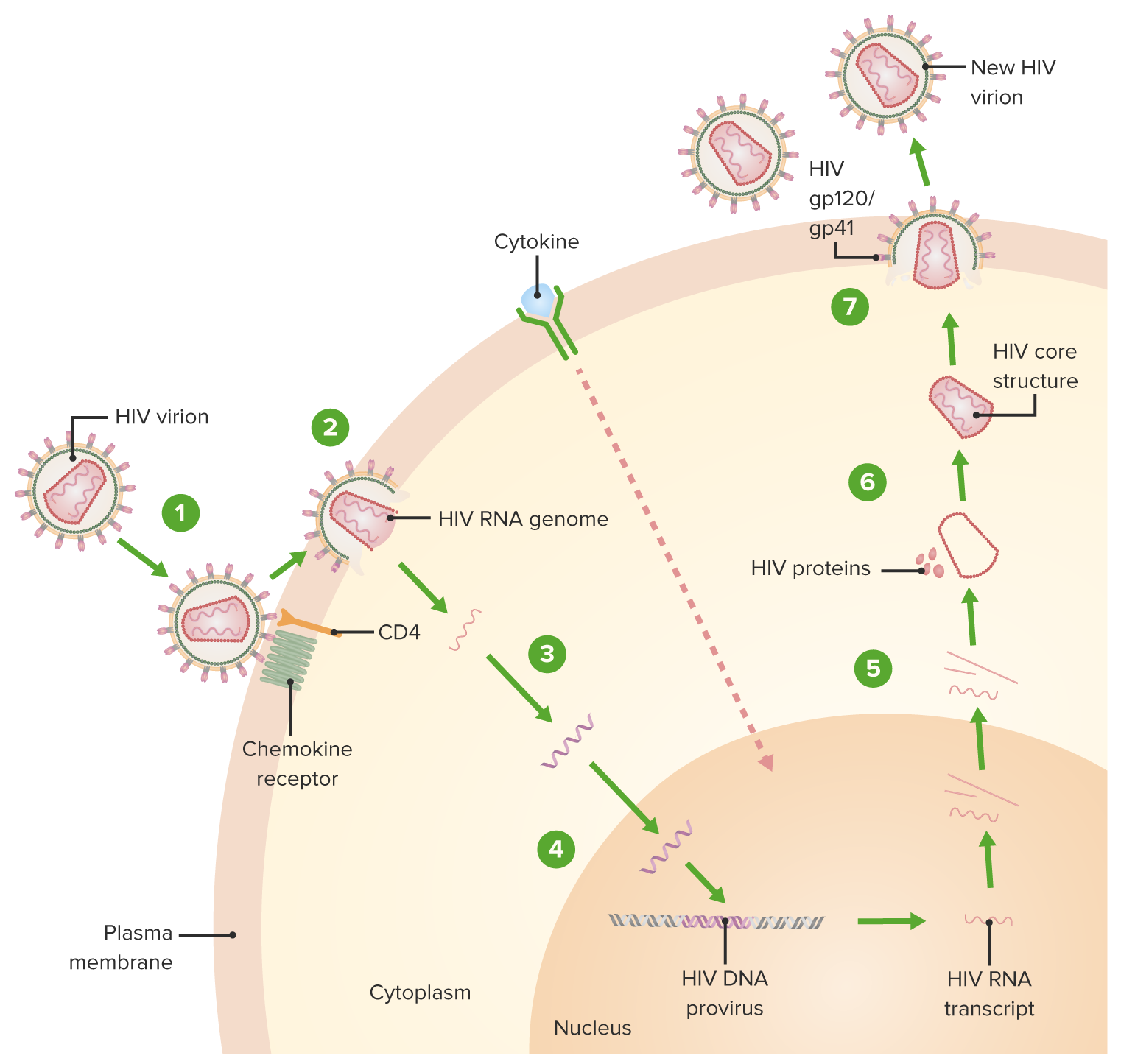Playlist
Show Playlist
Hide Playlist
Case Studies about Anti-HIV Agents – Antiviral Drugs
-
Slides Case Studies about Anti-HIV Agents Antiviral Drugs.pdf
-
Reference List Pharmacology.pdf
-
Download Lecture Overview
00:01 Let’s move on to a question, so case study number one. 00:05 You have a 54-year-old female prostitute who is HIV positive and she’s seen with an abdominal pain and elevated liver enzymes. 00:13 She also has high lipid levels. She’s diagnosed with pancreatitis. 00:17 She’s been following a two-year HAART protocol which includes DDI, ritonavir and zidovudine. 00:25 She was also placed on terbinafine for a foot fungal infection. 00:29 Which of these drugs is most likely to have caused the pancreatitis? We have several choices - we have didanosine, we have ritonavir, we have the zidovudine and we have the terbinafine. 00:45 Right - the didanosine! So, this is a question that comes up all the time. 00:50 Question like this came up recently in the USMLE and the MCCQ exams. 00:56 You just have to remember the facts here. 00:59 This particular drug is well known to cause pancreatitis up to 30% or almost a third of patients will develop it. 01:09 It’s a feared and potentially fatal disease, you need to treat it and if you don’t recognize it the patient could be in trouble. 01:16 You should be aware of it and you should be aware of this drug and pancreatitis because of its very high incidence. 01:22 We also spoke about other drugs having pancreatitis too but because DDI has such a high level of pancreatic dysfunction I think it’s most likely that that drug will be listed in your exam questions. 01:35 Now if you’re doing internal medicine exams at a much higher level you have to know them all but at the USMLE level, I think it’s reasonable to focus on this drug, pancreatitis, think about that and apply it in your exams. 01:50 Let’s move on to the next case, a case of heartburn. 01:54 A 32-year-old HIV patient presents with polyuria, polydipsia, dehydration and confusion. 02:01 She has blood work done and it shows an acidosis, hyperkalemia and hyperchloremia. 02:08 Okay, hyperchloremia is an important part of this question. 02:11 The patient’s on heart therapy with zidovudine, yeah, and these other agents. 02:16 Which drug is most likely to presents these syndromes? Is it the NRTI zidovudine? Is it the NNRTI nevirapine? Or is it the proteinase inhibitor ritonavir? Okay, so it's the NRTI and what are we talking about here? The purpose of this question is to reinforce the idea that the NRTIs are associated with an increase in the risk of lactic acidosis. 02:46 Nevirapine is an NNRTI and its well known to be associated with skin side effects such as rash, 15 - 20% of Steven-Johnson’s syndrome for example or a TEN syndrome as well. 03:00 Ritonavir is associated with multiple GI symptoms and skin rash. 03:03 It is used as a booster to other HIV medications. 03:08 Well, that’s it. I’m happy that you made it through this lecture series. 03:12 I’m sure that you’re gonna do really well on your exams. 03:15 Go in there with confidence and show them what you know.
About the Lecture
The lecture Case Studies about Anti-HIV Agents – Antiviral Drugs by Pravin Shukle, MD is from the course Antimicrobial Pharmacology.
Included Quiz Questions
What percent of patients on nevirapine are likely to develop a rash?
- 15%
- 5%
- 50%
- 55%
- 75%
Which medication is most likely to cause lactic acidosis in a patient receiving HAART?
- Zidovudine
- Atazanavir
- Ritonavir
- Foscarnet
- Efavirenz
Customer reviews
5,0 of 5 stars
| 5 Stars |
|
5 |
| 4 Stars |
|
0 |
| 3 Stars |
|
0 |
| 2 Stars |
|
0 |
| 1 Star |
|
0 |





